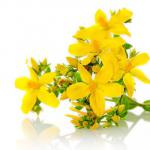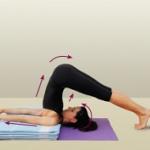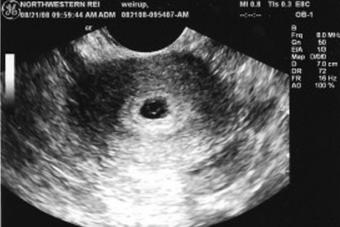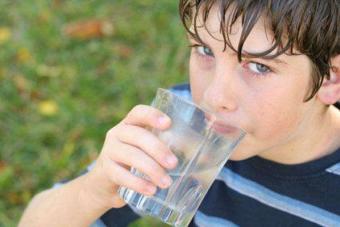The type of roundworms is nematodes, very numerous and diverse. This type of living organisms unites almost 25 thousand species, grouped into 31 orders and 3 classes.
The sizes of roundworms also vary - from a few micrometers to several meters.
The most microscopic roundworms have a size of no more than 80 micrometers. Nematodes have a solid, filamentous or spindle-shaped body, not divided into segments. Some worms are barrel- or lemon-shaped.
The body of roundworms is a developed muscular system, and is covered in some species with a smooth, and in others with an annular, nine-layered cuticle (skin). This gives them the opportunity to adapt to different conditions habitat: in water, in soil, in animal and human organisms.
Under the cuticle is subcutaneous layer– hypodermis, which forms 4 chords around the circumference of the body:
- Dorsal - on the back.
- Ventral - on the abdomen.
- 2 side.
Nervous system plays important role in the activity of the internal organs of nematodes, so it is quite developed.
Inside the spinal and abdominal chords there are parallel nerve fibers, connected by transverse bridges, and collected into single nerve trunks. The first such bridge is located in the throat of the worm. From them, nerve fibers extend to muscles and other organs. Sensory sensory nerves are located on the sides.
The sense organs of roundworms are poorly developed and are represented by bristles in the abdominal part of the body. With these bristles, nematodes sense their surroundings and their location. Small dimples serve as olfactory organs. Large, somewhat developed species of worms have simple visual organs.
Digestive organs


The structure of the digestive system of roundworms resembles a through tube. It begins with the mouth, then the esophagus follows, which passes into the foregut, then the midgut and ends with the hindgut, which extends out on the abdomen from the tail end of the worm.
The main features of roundworms are that they have:
- The whole is a hollow space of the body filled with connective tissue, like other worms, but liquid. The coelom is called the primary body cavity.
- The tail part of the intestine, ending with the anus.
Mouth roundworm leading into an easily expanding pharynx, equipped with lips. Along the edges of the mouth opening there are teeth with which the worm grinds food. The pharynx opens the entrance to the midgut and acts as a kind of pump.
During the contraction of the radial muscles, food is absorbed into the intestines. The movement of food is also facilitated by intracavitary fluid, which forms pressure in the intestines.
Roundworms lack hematopoiesis and respiratory system. But gas exchange still occurs. We can say that worms “breathe” through the cuticle, or body coverings. The nematode's energy comes from glycogen, which is broken down in the internal organs of the worm.
Decay products are removed from the body by the primary cavity fluid. Nutrients, after being processed in the intestines, also enter this fluid and are delivered to other parts of the body.
The excretory system is represented by two closed ducts, which are discharged onto the abdomen of the nematode. The decomposition products formed in the body of the roundworm first enter the coelom fluid, from which they enter the ducts excretory system, from where they are brought out.
A peculiarity of roundworms is their sexual division into male and female individuals. The genital organs of both have an elongated tubular shape. In the paired genital organs of the female, represented by a double uterus, as well as two ovaries with oviducts, from several tens to several thousand eggs are formed after a sexually mature male, using needles formed from the cuticle, introduces sperm from the vas deferens into the female’s genital slit.
Free-living nematodes:
- live in soil and water;
- participate in the ecology of all ecosystems;
- They are second in number only to arthropods.
The concentration of free-living nematodes is about 1 million individuals per 1 m3.
Harm to humans and animals:
A type of roundworms are distributed throughout the globe.
General characteristics of the type
Circulatory and respiratory systems
In roundworms there is no respiratory and circulatory system. Almost all representatives of the nematode family live in anaerobic conditions, and receive oxygen and nutrients in ready-made form.
In the hypodermal layer, glycogen accumulates, which is also broken down into butyric, valeric and other important organic acids. Suction ready nutrients occurs through the epithelial layer of the primary cavity (intestine), and accumulates in the hypodermis.
Such a primitive life support system makes breathing and circulatory system unnecessary in the worm's existence.
Morphology
Body structure (from outer layer to inner):
- The pseudochain is the primary cavity, lined with epithelium (intestine).
- Whole - secondary cavity without epithelium.
Digestive system of roundworms
At the anterior end of the body there is a mouth opening with lips made of cuticular sweets. Next, the oral capsule begins (in some species, armed with teeth), and then a small segment of the esophagus begins.
All digestive tract forms one rectum, which is divided into:
- front;
- average;
- posterior sections.
Some species have no anus.
Nervous system
Nervous system of nematodes:
- Peripharyngeal ring– located in the middle of the pharynx with an inclination towards the dorsal edge (in some species towards the ventral edge)
- Ventral (ventral) nerve trunk– runs along the lower plane of the body in the ventral ridge of the hypodermis. The rest of the small nerve fibers originate from it.
- Dorsal (dorsal) nerve trunk- passes through the dorsal ridge of the hypodermis. Does not “let out” nerve fibers.
Roundworms can also navigate by smell and light.
Reproductive system
They are dioecious worms with pronounced sexual dimorphism. Females lay eggs, larvae can hatch or external environment, or in the body of a female (viviparity). Females are larger than males.
The reproductive system of females is paired, tubular and consists of:
- ovaries;
- oviducts;
- uterus;
- vagina.
The ovaries are narrow, blindly curved, gradually turning into wider sections. The uterus is steamy, opening into the vagina, which opens on the ventral side in the front of the body. Females can be several times larger than males, their body is straight.
 In males, the end of the body is spirally wrapped towards the ventral plane.
In males, the end of the body is spirally wrapped towards the ventral plane.
Structure of the male reproductive system:
- Tubular testis.
- Seed tube.
- The vas deferens opens into the posterior intestine.
On the cloaca there are copulatory spicules with which the male holds the female.
In some species, the spicules have capulative bursae, which are the lateral parts of the posterior end of the body, expanded and flattened in the form of wings.
Excretory system
Consists of two tubules that begin in the back of the body, connecting to form common duct, opening with a hole on the ventral side of the anterior end of the body. Body movement occurs only in the dorsoventral (forward) direction.
Representatives of the type of nematodes in the human body
Human roundworm
The causative agent ascaris lumbricoides is a nematode, the length of the male is up to 25 centimeters, and the female is up to 40 centimeters. The body color is from white to pale pink, narrow, cylindrical in shape, pointed at the ends. The mouth is a pair of cuticular lips.
In skinny and ileum They live for about a year and are capable of living only in the human body. At one time, the female is capable of laying up to 240 thousand eggs, which are released into the external environment along with feces. Eggs in the external environment can live up to 5 years, thanks to the five-layer outer shell, protecting from most environmental factors.
Developmental biology:
- Enter the rectum through food or dirty water, are then localized in the small intestine.
- After 21 days, the larvae hatch and pierce the intestinal mucosa. They migrate with the bloodstream through the internal organs: liver, right side of the heart, lungs.
- Having entered the lungs through the pulmonary circulation, the larvae break through the alveolar capillaries and, together with a cough or exhaled air, enter the oral cavity.
- They are swallowed back into the digestive tract through the oral cavity.
The entire migration period takes up to two weeks. The female becomes sexually mature after 20 days and is able to lay eggs.
Pinworm
A nematode that causes a common disease is enterobiasis. This disease is also called “unwashed hands disease”, since pathogen eggs often enter the human body through dirty food and hands. Mostly children are susceptible to the disease. The pathogen is localized in all parts of the intestine, and the main symptom of the disease is the anal tooth.
The causative agent enterobius is a nematode with an elongated body and narrowed ends. Females reach a length of up to 12 millimeters, and males up to 5 millimeters.
The color of the pathogen is grayish-white. At the mouth opening from the side abdominal cavity There is a special vesicle with the help of which the helminth attaches to the intestinal mucosa.
Developmental biology:
- fall into human body together with food, are localized in lower parts small intestine, attach to the intestinal mucosa.
- The female becomes sexually mature at the age of 4 weeks.
- The fertilized female moves to the rectum to lay eggs.
- At night, it emerges from the anus and lays eggs in the anal folds, after which it dies.
- One female can lay up to two thousand eggs.
Whipworm
Nematode, disease-causing trichocephalosis. The pathogen is considered only human, and young children are especially susceptible. The habitat is the initial section of the large intestine. With a small invasion, the symptoms of the disease almost do not appear, but with severe infection, diarrhea, vomiting, rectal prolapse are possible, and are also one of the causes of inflammation of the appendix.
The causative agent trichocephalus trichiurus is a helminth with a length of 3.5 to 5 centimeters.
Basic distinctive feature is the presence on the front of the body of a thread-like part on which the mouth opening and esophagus are located. The remaining organs of the helminth are located in the posterior compacted part. One individual can live in the human body for up to 5 years.
Developmental biology:
- Helminth eggs enter the human digestive tract through contaminated food or water.
- Once in thin section intestines, hatching of larvae occurs within a few days.
- They immediately migrate to the large intestine.
- In the thick section, they are attached to the mucous membrane by a filiform process, cutting through the mucous membrane with it. They feed on blood and tissue fluid. After 3 months, they become sexually mature.
- A female whipworm can lay 20 thousand eggs per day.
A prerequisite for the maturation of an invasive egg is to remain in moist soil at a temperature of 24-30 degrees for 10-40 days. After maturation, they remain capable of infection for several months.
Flatworms and roundworms: differences
 Differences flatworms from round:
Differences flatworms from round:
- Intestines– flatworms have only a mouth opening, and no anal opening. Excretion is excreted through small tubules that penetrate the entire body of the worm and exit through the outer integument. Nematodes have oral and anal openings, intestinal tract through.
- Reproductive system– , with the exception of the trematode family Schistosomatidae, are hermaphrodites. There is an opinion that reproduction in flatworms occurs crosswise, but self-fertilization is also possible. Nematodes have a strict distribution of sexes with pronounced sexual dimorphism.
- Presence of cavities– a roundworm has a primary and secondary cavity, whereas, like flatworms, they are asexual animals. In the skin-muscle sac of trematodes, digestive and excretory processes and absorption of nutrients occur.
- Nematodes have only longitudinal muscles, which allow the worm to move exclusively in the dorsoventral direction, and flatworms also have transverse and longitudinal muscles.
Let's read the information .
Roundworms(primocavity or nematodes) - three-layered multicellular animals with a bilaterally symmetrical body, having a cylindrical shape with a circular cross-section in cross section.
The group was first identified by the German zoologist K.A. under the name Nematoidea (Nematodes).
Today, most scientists distinguish 2 classes in the Nematode phylum (Adenophorea and Secernents).
Structural features
1. have a cylindrical or spindle-shaped body. In cross section it is round (hence the name of the type).
2. there is no body segmentation.
3. have an outer cuticle, which performs the function of an exoskeleton (protects against mechanical and chemical influences).
4. have a body cavity - a separate space between the body wall (skin-muscle sac) and internal organs (in flatworms this space is filled with loose fiber - parenchyma).
|
Organ system |
Characteristic |
|
Digestive |
The intestine begins with the foregut (esophagus or pharynx). Next is the middle and hindgut, ends with the anus. A through digestive tube through which food passes in one direction (in flatworms it is bidirectional). |
|
Blood |
Absent. Transport of substances between tissues occurs by diffusion through the cavity fluid. |
|
Respiratory |
Absent. Gas exchange occurs through the outer layers of the body. |
|
excretory |
Poorly developed. Protonephridia or altered skin glands. |
|
Sexual |
Most are dioecious, with sexual dimorphism occurring. The male reproductive system – testis, vas deferens, ejaculatory duct. The female reproductive apparatus is the right and left ovary, paired oviducts, right and left uterus. |
|
Nervous |
Orthogonal type (consists of a peripharyngeal nerve ring and nerve trunks extending from it). |
|
Sense organs |
Poorly developed. |
|
Occurs without changing owners. |
|
|
Meaning in nature or human life |
Roundworms are believed to have evolved from a group of flatworms.
Aromorphoses, which contributed to the appearance of roundworms:
- emergence primary cavity bodies (the second name of the type is primary cavity)
- progressive development of the nervous system (formation of ganglia, peripharyngeal nerve ring, dorsal and ventral nerve trunks)
- appearance of the hindgut and anus
- appearance of excretory opening
- the appearance of four muscle strands, which allowed bending when crawling
- emergence of dioecious reproductive system And internal fertilization
|
Roundworms |
Examples |
Cause disease |
|
Soil and plant (phytonematodes) |
Stem onion and Strawberry nematode |
Nematodes |
Footnotes
Ascariasis– an invasive disease of humans and pigs caused by roundworms. Symptoms: mainly indigestion, exhaustion.
Trichinosis– an invasive disease of humans and animals (pigs, dogs, cats, ruminants, rodents, etc.) caused by trichina.
Dracunculiasis– an invasive disease of humans and animals caused by guinea worm (affects the subcutaneous tissue).
Trichinella(Trichina) is a worm of the class of nematodes.
Hookworm- a worm of the class of nematodes.
Rudolphi Asmund Karl (1771 – 1832) – German naturalist, zoologist and botanist.
Used Books:
1.Biology: complete guide to prepare for the Unified State Exam. / G.I. Lerner. – M.: AST: Astrel; Vladimir; VKT, 2009
2.Biology: Animals: textbook. for 7-8 grades. general education Institutions. – 7th ed. – M.: Education, 2000.
3.Biology for those entering universities. Intensive course / G.L.Bilich, V.A.Kryzhanovsky. – M.: Onyx Publishing House, 2006.
4.Biology: textbook / reference manual / A.G. Lebedev. M.: AST: Astrel. 2009.
5.Biology. Full course of general secondary school: tutorial for schoolchildren and applicants / M.A. Valovaya, N.A. Sokolova, A.A. Kamensky. – M.: Exam, 2002.
Internet resources used:
Nematode plant diseases
Roundworms compared to flatworms are characterized by more high organization. Representatives of this type are characterized by a spindle-shaped body shape, rounded in cross section. Internal organs placed in the primary body cavity filled with fluid.
On top, roundworms are covered with a layer of dense substance that covers the surface of epithelial cells and is a product of their secretion. This layer is called cuticle. Under the cuticle there is a layer of longitudinal muscles.
Representative type - human roundworm- lives in small intestines person. It has a very elastic body due to the presence of longitudinal muscles. There is a horn at the anterior end of the body, and an anus at the posterior end.
The mouth is surrounded by three lips, with which the roundworm captures semi-digested food; all digestion occurs in the intestine. Undigested food remains are removed through the anus.
Nervous system like flatworms. Roundworms are dioecious animals. The female has two ovaries, and the male has one testis. The eggs are released into the human intestines and excreted in the feces. After some time at high temperature and access to oxygen, a larva is formed in them. Such “eggs” can end up in a person’s intestines if he eats unwashed vegetables and fruits. The larva emerges from the eggs, penetrates the intestinal walls, enters the bloodstream and, along with its flow, penetrates the lungs. With sputum, the larvae are expectorated into the throat and then swallowed again. In the intestine, an adult worm forms from the larva, causing the disease - ascariasis.
The female roundworm reaches 44 cm. The males reach 25 cm. The female is very fertile and can produce more than 240,000 eggs per day. Its eggs are very tenacious and can be preserved in environment up to 7 years.
Type Roundworms
Response Plan:
- general characteristics Roundworms
- Body structure of human roundworm
- Reproduction and development of human roundworm
- Classification of Roundworms, variety of species
- The significance of Roundworms in nature and human life
General characteristics of Roundworms
Veils. On the outside, the skin-muscle sac is covered with a protective shell - the cuticle. During the growth of worms, it is periodically reset and then resumed. Below the cuticle is the hypodermis, which is the result of the fusion of skin cells. Under the hypodermis there are 4 ribbons of longitudinal muscles. During contraction, the dorsal and ventral bands act in opposite ways, and the body of the worm can bend in the dorsal-abdominal direction. The cuticle, hypodermis and muscles form a skin-muscular sac.
Digestive system. At the level of Roundworms, a grandiose event occurs in the evolution of the digestive system, which made all subsequent types of animals happy. It is in Roundworms that the hindgut and anus first appear. Now they digestive system consists of three sections: the anterior, middle and posterior sections of the intestine. The anterior section is usually divided into the mouth, muscular pharynx and esophagus. Digestion occurs in the midgut. With the appearance of the anus, food begins to move in one direction, which makes it possible various departments specialize and perform their digestive function more efficiently.
Excretory organs– in some protonephridia, there is an excretory opening in the front of the body on the ventral side. Some representatives have modified skin glands, they are called “neck glands”. Some have no excretory organs.
Nervous system and sensory organs. Nervous system of the scalene type (orthogonal). It consists of a peripharyngeal nerve ring surrounding the pharynx, and 6 nerve trunks extending forward and backward, of which the dorsal and abdominal ones are the most developed. The trunks are connected by jumpers (commissures). There are organs of touch and organs of chemical sense (smell). Free-living animals have primitive eyes.
Reproduction. Most Roundworms are dioecious organisms, which ensures genetic diversity in their offspring. There is sexual dimorphism (females differ in appearance from males) Development is indirect, that is, with a larval stage, without a change of host.
Genital organs in the form of tubes. The male testes open through the vas deferens into the final section of the intestine - the cloaca. The male has copulatory organs - cuticular needles, with the help of which he introduces sperm into the female's genital tract. Fertilization is internal. In the female, the paired ovaries continue into the oviducts, which pass into two uteri, which open with the genital opening on the ventral side of the body.
Representatives: The phylum is divided into several classes, the most numerous among them being the class Nematodes: Roundworms, pinworms.
Body structure of human roundworm
New concepts and terms: cuticle, helminth, invasion, copulatory organs, sexual dimorphism, hydroskeleton, anus, detritivore.
Questions for consolidation.
Literature:
- Bilich G.L., Kryzhanovsky V.A. Biology. Full course. In 3 volumes - M.: LLC Publishing House "Onyx 21st century", 2002
- Pimenov A.V., Pimenova I.N. Zoology of invertebrates. Theory. Tasks. Answers: Saratov, OJSC publishing house "Lyceum", 2005.
- Chebyshev N.V., Kuznetsov S.V., Zaichikova S.G. Biology: a guide for applicants to universities. T.2. – M.: Novaya Volna Publishing House LLC, 1998.
- www.collegemicrob.narod.ru
- www.deta-elis.prom.ua





